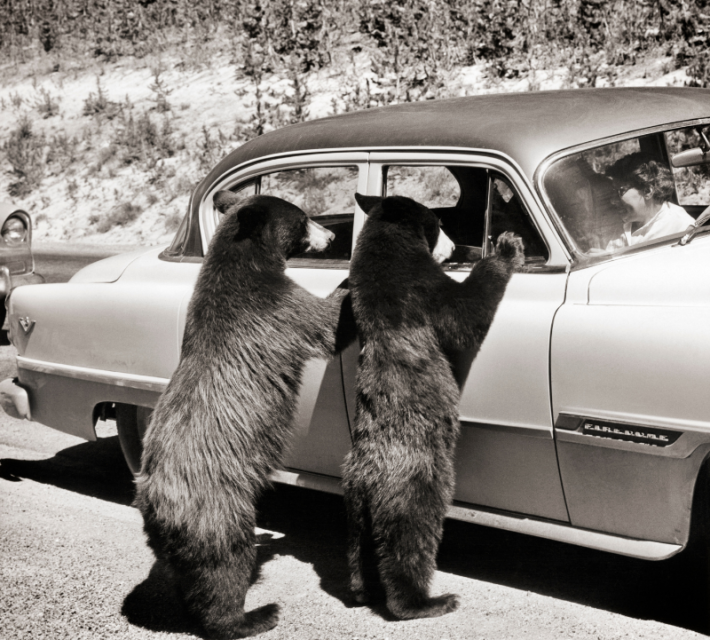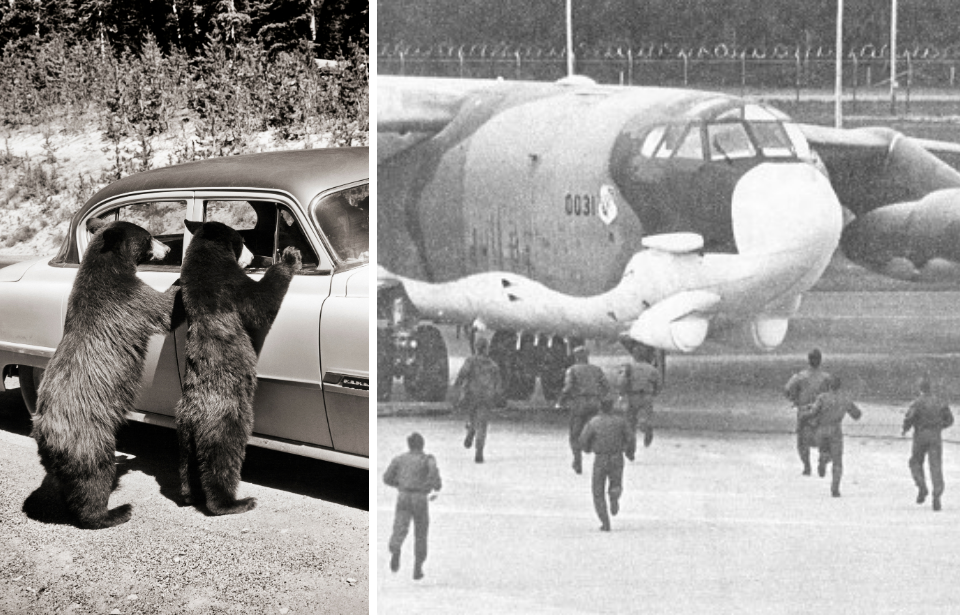At the height of the Cold War, one adventurous black bear nearly set World War III in motion. With tensions high due to the Cuban missile crisis, the world was teetering on the razor’s edge — and things nearly turned out much worse than many could have imagined.
In October of 1962, the Cold War reached one of its hottest moments when the Soviet Union began placing nuclear missiles in Cuba, in response to the U.S. placement of nuclear missiles in Turkey and Italy. These events culminated in a naval ‘blockade’ around Cuba, officially named a quarantine, preventing the Soviets from sending more nuclear missiles. This tense showdown between the two most powerful superpowers is regarded as the closest the world has ever come to full-scale nuclear war.
The black bear was not a member of the Red Army
The situation was so dire that most of the U.S. military was on DEFCON 3, and the Strategic Air Command, which handled most of the U.S. nuclear arsenal, was on DEFCON 2, just one down from a nuclear war.
During this time, all military personnel were on edge, anxiously waiting for the crisis to be resolved, whether by peace or war. Such chaotic and unpredictable times can cause people to become jumpy, which is exactly what happened on the night of October 25th, 1962, when an encounter at the Duluth Air Force Base nearly set off WWIII.
Duluth Air Force Base, as it was known at the time, was holding around 130 nuclear weapons during the crisis, so security was tight.
In the darkness of the night, a sentry at the base noticed a shadowy figure, seemingly attempting to climb the perimeter fence. Assuming it was a Soviet saboteur, he fired shots at the figure before sounding the sabotage alarm.
This alarm was connected to neighboring bases, notifying them of the trouble. The sentry quickly realized the figure was not a Soviet saboteur but in fact a slightly less terrifying black bear. Noticing his mistake, he promptly reported the incident, and the alarms were canceled.

At the Volk Field Air National Guard Base, some 200 miles away, the situation was much less relaxed. This smaller base had been rushed into service for F-106 Delta Dart interceptors in response to the ongoing Cuban Missile Crisis. It was so small that it didn’t even have a control tower. Unknowingly to those at the time, in the haste of its construction, an engineer had crossed the alarm wires from the Duluth Air Force Base to Volk Field.
Instead of triggering the alarm that would notify them of an intruder at the nearby base, Volk Field had their ‘scramble’ alarm triggered instead, alerting the pilots to board the aircraft and prepare for imminent combat.
With F-106s armed with nuclear-tipped Genie missiles that could wipe out an entire squadron of Soviet bombers preparing for takeoff, and with all those on the base under the belief WWIII was beginning, it appears an officer decided to make a call directly to Duluth Air Force Base to check if the alert was indeed real. This is according to one of the many variations on the story.
Thankfully, cooler heads prevailed, and the alert was canceled. A Jeep drove out in front of the taxiing aircraft with lights flashing to prevent their takeoff.
So, while the scrambled aircraft would likely have been notified of the mistake before they made any progress in the air, with the large numbers of U.S. bombers in the air during the crisis, the scrambled jets could have accidentally targeted friendly aircraft.
Mistakes involving nuclear arms were surprisingly common
With such high stakes, it is hard to believe such trivial errors can occur, but as has since been discovered, both the U.S. and Soviet Union have an uncomfortably long list of mistakes involving nuclear weapons, with the U.S. alone losing six, none of which were ever found.
Another incident with a nuclear weapon occurred in 1958, when a B-47 Stratojet accidentally released a nuclear bomb, which fell and landed in the Gregg family’s garden in Mars Bluff, South Carolina. The nuclear stage didn’t detonate, but the high explosives did, totally destroying the family’s home. Luckily, the family only suffered minor injuries.
Then in 1961, a B-52 carrying two 24 megaton bombs disintegrated in mid air over Goldsboro, North Carolina, in what is now known as the Goldsboro Incident. One of the bombs fell 10,000 feet before slamming into ‘waterlogged farmland.’
After recovering the bomb, it was discovered that five of the six safety mechanisms had failed, leaving just one safety switch stopping the bomb exploding, which would have been 3,700 times more powerful than the one over Hiroshima.
More from us: ‘The Man Who Saved the World’ – The Russian Who Avoided WWIII
The Soviets are guilty of negligence with their weapons, too, having lost more than 100 bombs, according to some estimates.
The fact that in this case, a completely unaware black bear almost started a nuclear catastrophe is both amusing and terrifying, and it shows that even during the most tense and critical moments, small mistakes are made which can lead to total devastation.
